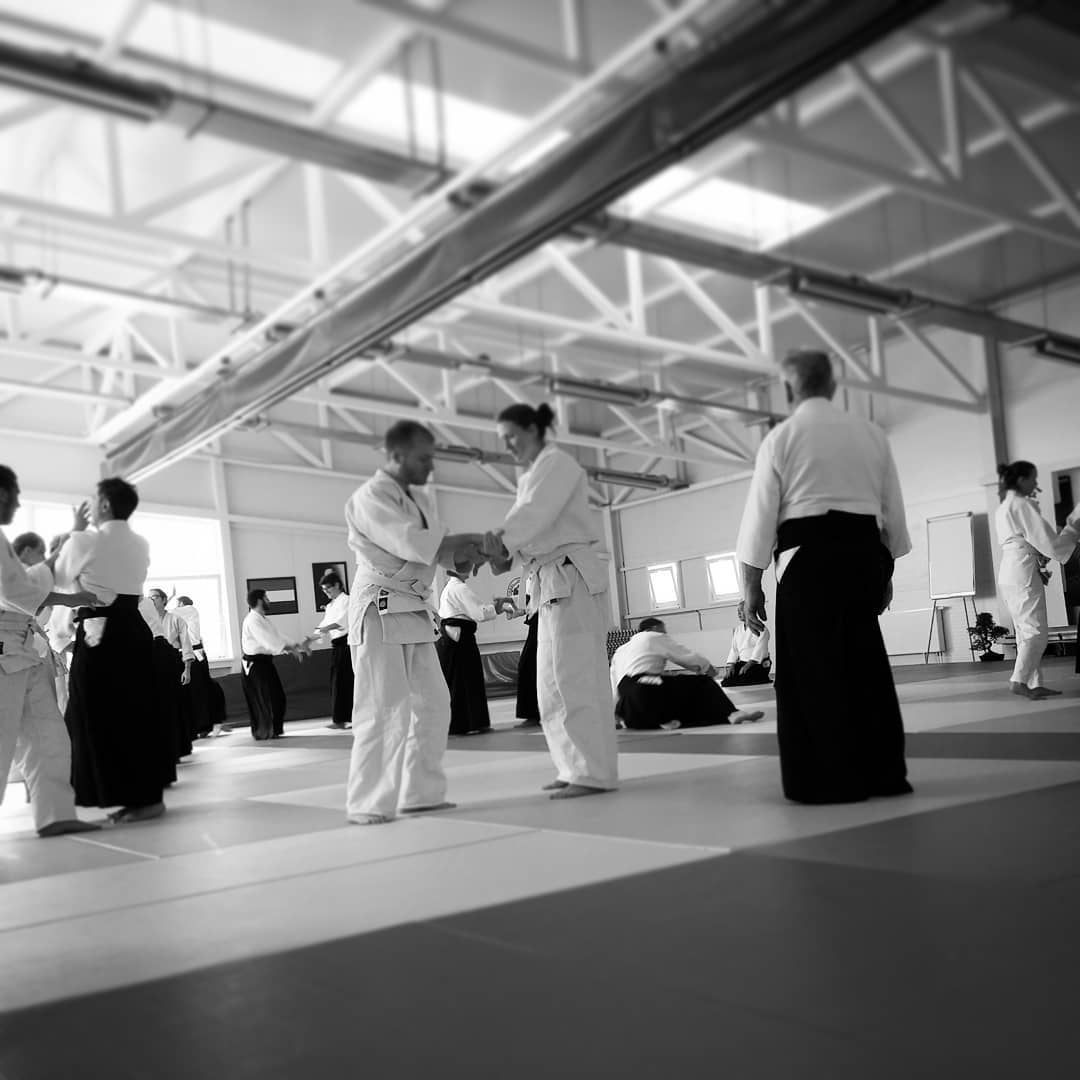1st International Seminar with Doshu in Budapest, 19.-21.01 2018

Disclaimer: the author is solely responsible for any factual errors in the text.
Over 50 participants from Hungary and from many different dojos from around Europe (Italy, Germany, Austria, Croatia, Slovenia, Sweden) attended the 1st Budapest Seminar with Doshu, organised in honour of the late Beppe sensei (Ki Dojo, Florence). The seminar was held in the Budai Judo Academy in Budapest.
The organisers hosted a magnificent dinner in the Buda hills in the atelier of a renowned sculptor on Saturday evening followed by a visit to Szechenyi thermal baths, the largest of its kind in Europe, on Sunday afternoon where it is possible to get lost (and find yourself) in a labyrinth of baths, pools and sauna of incredible variety.
A few ideas and themes from the seminar to consider:
The dojo is a place you should respect. It is not a place to look at others. Just like you should behave and dress appropriately in a church, you should put on your hakama before entering.
These days many people want to know everything. Yet in aikido if I know (what I’m going to do) then the attacker can also know. There is value in not knowing.
Either not knowing or being sceptical of something can be called “beginner’s mind” (shoshin). People who have been practising Aikido for many years can lose shoshin. This mind form is expressed in the body and can be observed.
On positive / negative
Aikido is a practice of being half a second in the future. To say “(live in the) now” is to already be in the past. To live in the past is potentially negative. To live and create in the (immediate) future is potentially positive. All other notions of positive and negative are dualistic and are based on point mathematics.
What is the difference between technology and technique?
Technology is that which is operated and conducted by machines, even if it is developed by people. A technique is a fixed form which is utilised to fulfill a specific task. Anything can be a technique. Mathematically, if everything can be a technique then there is no technique, and vice versa. In the loftiest sense then, there is no technique in Aikido. But in order to develop the ability to do something useful we must fix forms so as to imagine and practise what to do in specific situations. New meaning and forms are created when we conceive of multiple techniques together.
Tsuzukiwaza is an expression of continuity of technique by putting numerous techniques together. This is an example of transcending point mathematics (existence without form) to line mathematics (the expression of relationships).
Why do we use the term “koteoroshi” (小手下ろし)? Koteoroshi undo starts with kotegaeshi (turning the hand) and then leads downwards. It is normal in Aikido and in all art that it takes at least 10 years to reach proficiency. Koteoroshi undo is an example of a form which takes 10 years of practise to understand. For example, it is useless to try to bend the wrist if the uke (or attacker) makes a strong fist. It is easy to resist. This is the meaning of koteoroshi.
Aikido in real life
In aikido in the dojo we make partner fall down to practise changing and leading partner’s mind. In aikido in real life it is neither necessary nor advisable to try throwing someone. This can potentially escalate conflict and lead to avoidable injury or worse. It is just enough to change mind. Therefore, it is just necessary to start a technique as you can never know what may happen. Of course it is not a guarantee that someone doesn’t fall or that the attack stops easily. To think of throwing, that is, to perceive or think of the end of a technique is point mathematics. Remember, there is no technique (fixed form) of life. It is more important to know how to start something and how a form can change. That is line mathematics. The alternative is to try to prepare for every possible eventuality in life with a corresponding technique which is firstly an impossibility and, analogous to painting by numbers, not especially interesting or conducive to futher development. “Ki no Kenkyukai” emphasises an ethos of research.
Report: R. Jepson ,Photo: Andras Vari (Budapest).
Links:
Ki Aikido Hungary: http://www.kiaikido.hu/pages/home_hu.php
